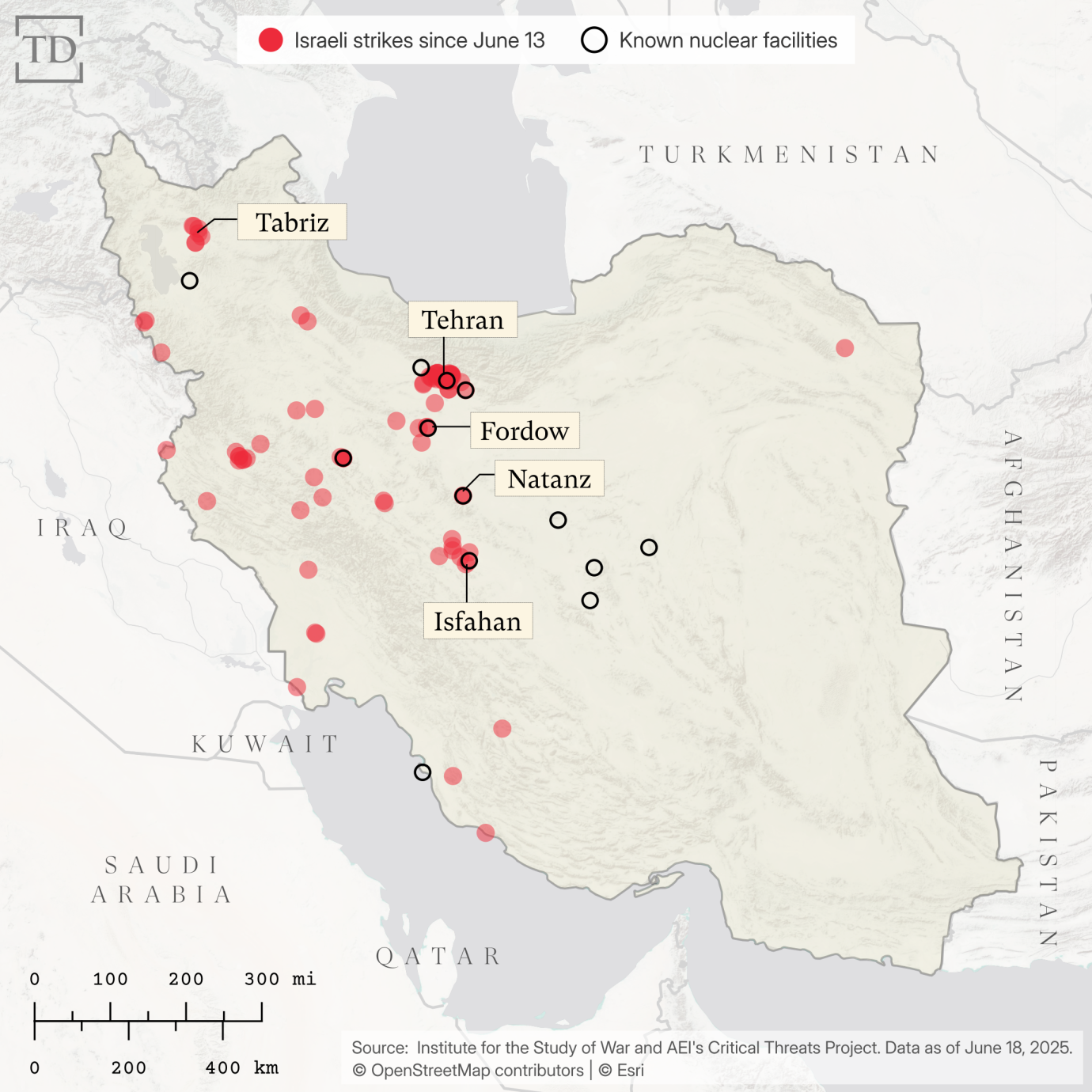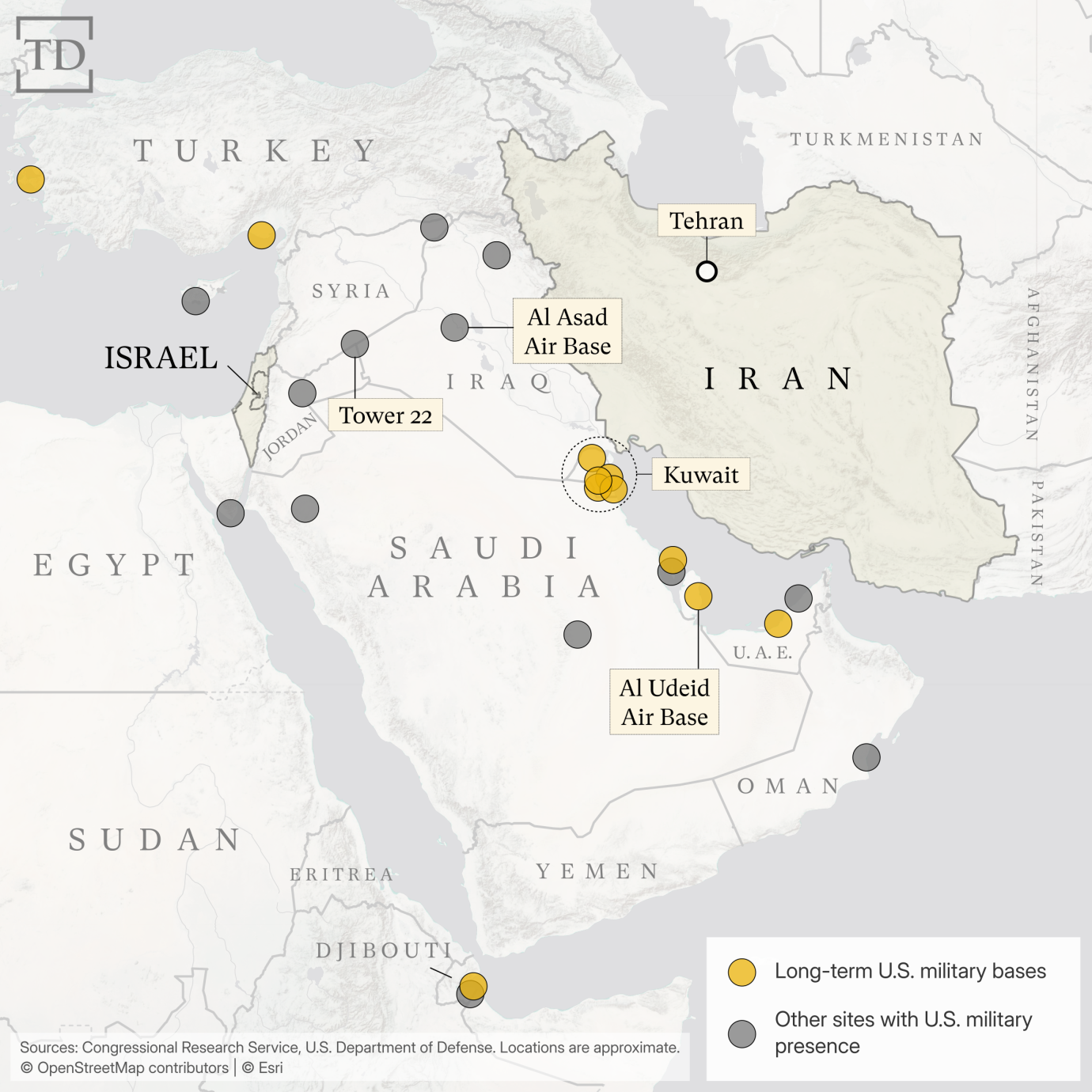One week after Israel began its strikes on Iran’s nuclear program, the two sides continue to trade daily and devastating attacks. While Jerusalem’s military campaign has largely centered on Iranian military, nuclear, and regime targets, Tehran’s missile salvos have resulted in significant damage to cities and towns across Israel. Meanwhile, the future U.S. military role remains unclear, as President Donald Trump oscillates between diplomatic outreach and demands for an “unconditional surrender” from the Islamic Republic.
Across Israel, daily ballistic missile barrages aimed at population centers have killed at least 24 civilians. In the central city of Ramat Gan, a direct missile hit a residential building and wounded at least 39 people early Thursday morning. In the Negev city of Be’er Sheva, another missile struck the Soroka Medical Center, southern Israel’s main hospital, destroying several wards and injuring 71 people. But the human toll could’ve been much worse: According to hospital administrators, patients in the part of the building that sustained the most damage had been evacuated to an underground facility just hours before the attack.
The missiles have posed a major challenge to Israel’s layered air defenses, particularly when fired off in large volleys. But the damage is still significantly less severe than many officials feared it would be before the war’s start. Ahead of Jerusalem’s initial strikes last week, the military told the Israeli Cabinet to expect as many as 4,000 civilian deaths from Iran’s opening salvo. Preemptive attacks on Iranian missile sites have thus far allowed Israel to sidestep this worst-case scenario—the Israel Defense Forces (IDF) estimates that its air campaign has hit roughly two-thirds of Iran’s launchers—but the threat of mass casualty events remains.
And indeed, as it undertakes an operation to set back the Iranian nuclear program, Israel increasingly views Tehran’s ballistic missile production as yet another existential threat. A recent Israeli intelligence assessment found that, prior to the war’s start, the Islamic Republic had developed a plan to produce 8,000 missiles capable of reaching Israel by next year and 20,000 within two years. The goal: overwhelming Israeli air defenses and maximizing civilian death.
Speaking from the heavily damaged Soroka Medical Center on Thursday, Israeli Prime Minister Benjamin Netanyahu rejected Tehran’s claims that its attack had targeted a military site. “Israel is fighting to remove the nuclear and missile threat aimed at our annihilation. We’re targeting military sites, we’re targeting nuclear sites, we’re targeting missile sites. They’re targeting a hospital,” he told reporters. “They’re targeting civilians because they’re a criminal regime.”
Meanwhile, Israeli strikes against Iranian nuclear facilities—including Natanz and Isfahan—continued throughout the week. But one location in particular poses a unique challenge to military planners: Fordow. The uranium enrichment plant was built deep beneath into the side of a mountain, going down as far as 295 feet. The natural shield is believed to make Fordow impenetrable to any aerial bombs in Jerusalem’s arsenal—but not the U.S. arsenal. The U.S. currently has “bunker buster” munitions—and the strategic bombers necessary to deliver them—within flying distance of Iran.

But the prospect of U.S. participation in Israel’s military campaign remains up in the air. According to a report by the Wall Street Journal, Trump informed aides on Tuesday that he had approved attack plans but wanted to hold off to give Tehran the opportunity to voluntarily dismantle its nuclear program. And White House press secretary Karoline Leavitt told reporters Thursday that Trump will decide whether to join the offensive operations within two weeks, given “substantial chance of negotiations that may or may not take place in the near future.”
Against the uncertain backdrop, the U.S. has begun moving additional military hardware to the region. This week, the U.S. Navy announced plans to move two additional aircraft carriers—the USS Gerald R. Ford and the USS Nimitz—to the area. In addition to threatening to block the Strait of Hormuz, the Islamic Republic has vowed to retaliate against U.S. military personnel and assets in the Middle East should Trump join the war. More than 40,000 American troops and civilian employees of the Pentagon are currently deployed to countries across the region, including Bahrain, Kuwait, and Jordan. And many have already found themselves in Tehran’s crosshairs. Last week, Iranian-backed militias fired drones at U.S. forces stationed at the Al Asad Air Base in western Iraq.

But there’s concern that the U.S. fear of escalation could allow the Iranian regime to pull Washington into another round of fruitless nuclear negotiations. Iran is “trying to string the U.S. along, using the lure of ‘substantial negotiations’ in the hopes of delaying a strike, polarizing U.S. decision-making, creating fissures between the U.S. and [Israel], and fracturing international support,” Jason Brodsky, the policy director at United Against Nuclear Iran, tweeted on Thursday.
Addressing reporters on Thursday, Netanyahu insisted that Israel is up to the task of eliminating the Iranian nuclear threat—with or without U.S. participation. “We will achieve all our objectives and hit all of their nuclear facilities. We have the capability to do that,” he said, adding of Trump: “He will do what is good for the United States and I will do what is good for the State of Israel and I must say that up to this moment everyone is doing their part.” Jerusalem’s plans for Fordow are unclear, but if the last year has taught analysts anything, it’s not to discount Israel’s ingenuity when it comes to addressing an overwhelming threat.
“Across the Israeli political spectrum, there’s a recognition that decades of nuclear diplomacy have not borne fruit, that Iran is determined to have nuclear weapons, and that Iran is determined to try to destroy this country. It’s made that very, very clear countless times, not just in terms of its rhetoric but in terms of its actions,” Kessler said. “This is really a decades-long reckoning.”

















